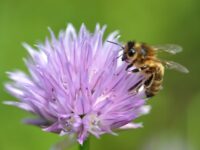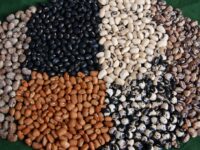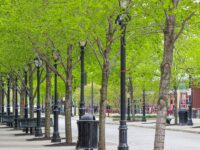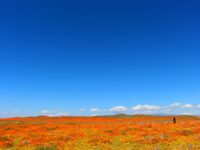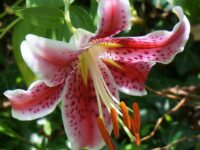Kindly thought of as the big, fluffy sibling of the well-respected honeybee, bumblebees spend most of their time minding their own business as they go about seasonal pollination. But recent findings show that these gentle giants may not be as lackadaisical as their reputation implies — they appear to be playing a very interactive role in their relationship with plants.
The bumblebee’s role in pollination is symbiotic, meaning the plants benefit just as much as the bees do. The bees are helpful by inadvertently exchanging pollen between flowers, which facilitates plant reproduction, as they consume and transport pollen back to the hive. Pollen serves as an essential protein source for bumblebee workers and is the only food source provided to bee larvae as they grow. Because of this, the availability of flowers in the local ecosystem has crucial effects for bumblebee colonies and can greatly influence the success or failure of the colony from reproduction to social organization.
During springtime, synchronization of plant flowering and bumblebee colonization is vital for both organisms to achieve maximal benefits. With climate change occurring, environmental cues are shifting, and each year it becomes more difficult to achieve this seasonal synchronization. Recent studies explore the possibility that bumblebees themselves play a role in regional flower availability and are capable of influencing local plant populations’ flowering schedules.
This behavioral phenomenon in bumblebees was recently elucidated by the Swiss Federal Institute of Technology in Zurich by Dr. Foteini Pashalidou and a team of researchers. The team investigated one bumblebee behavior in particular: the intentional damaging of leaves on flowerless plants.
This meant that bees may be compensating for pollen shortages by damaging the plant leaves such that flowering and pollen production are encouraged.
Upon experimental observation of the leaf-damaging behavior, researchers concluded that bumblebee workers were cutting 5 to 10 distinctively shaped holes in the leaves of flowerless plants using their facial appendages, the proboscis and mandibles. Simple explanations for this behavior were considered, but it became clear that the bees were not consuming the leaf matter nor transporting it back to the hive. This meant that bees may be compensating for pollen shortages by damaging the plant leaves such that flowering and pollen production are encouraged.
To first test whether or not leaf damage actually influences the plant’s flowering schedule, the researchers set up a laboratory experiment. Using all of the same plant species, they compared the flowering schedules of plants with no leaf damage, bee-inflicted leaf damage, and damage done by researchers that was identical to bee-inflicted damage. They found that, overall, leaf damage led to earlier flowering regardless of how it was inflicted, but bee-inflicted damage had a much more dramatic effect on the flowering schedule. Human-inflicted damage led to flowering several days earlier than the non-damaged plants, but bee-inflicted damage advanced flowering by weeks. Human’s lack of ability to recreate the phenomenon suggests there is a particular method bees use that scientists have yet to discover. It’s possible that this difference is due to numerous mechanisms, from the technique of cutting, to the chemicals released, to the bees’ detection of some salient quality within each leaf’s anatomy.
bee-inflicted damage advanced flowering by weeks
Next, the researchers sought to uncover whether or not this behavior is influenced by the availability of pollen in the surrounding ecosystem. This experiment involved keeping two colonies in a controlled environment and limiting the amount of pollen available to each hive. In the first part of the study, one colony was presented with abundant pollen and one was deprived of pollen. The researchers then measured the proportion of leaves damaged each day, swapping new plants into the enclosure daily. After discovering a significant increase in leaf-damaging behavior in the pollen-deprived colony, they then continued on to the second part of the study. The team reversed the pollen availability in each colony and found the same compensating effect regardless of the colony’s history with pollen availability. This showed that leaf-damaging behaviors increase under conditions of insufficient or limited pollen.
The discovery that bumblebees are capable of spurring flowering in plants and increasing pollen production is a wonderful new development in our knowledge of their behavioral repertoire. With climate change rapidly acting on local ecosystems and affecting annual plant and animal schedules, it is a light at the end of a dark tunnel to learn that some species have already developed the tools necessary to withstand and overcome these changes.
Image source: Pixabay
Source: 1


